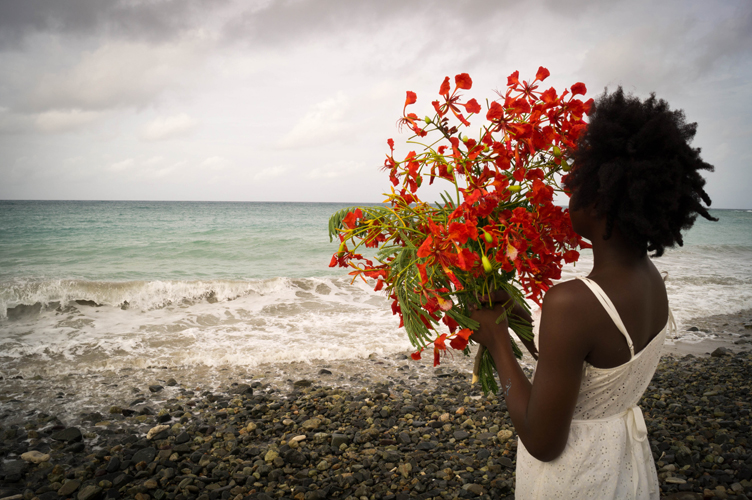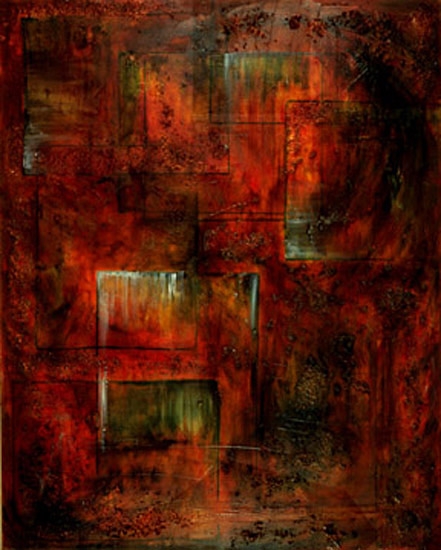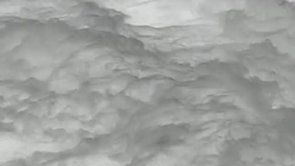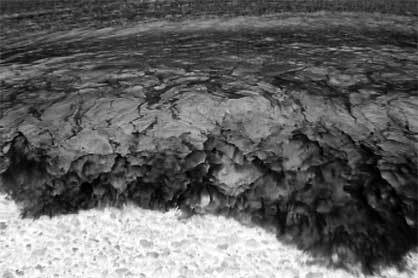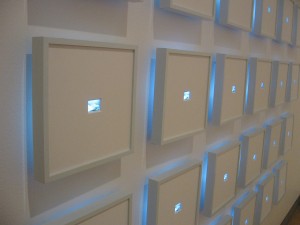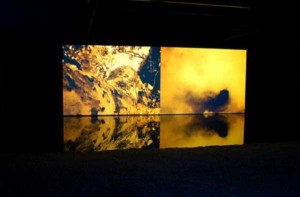
“The resonance of traumatic historical events in my personal and cultural memory is at the very core of my work. I see the work as the result of my investigation of the tension that exists in spaces that are at once sites of trauma and sites of healing. I am intrigued by concept of the “re-memory” (renewed or remembered memory), memory as a trigger and a means for exploring the dismembering of the histories, cultures, traditions, families, and personal memories of my community/self. My work seeks to articulate an historical and cultural injury in a way that tries to avoid and subvert images of suffering and victim-hood that have been used as visual hot buttons in the past. I am interested in seducing the eye by using the scenic aspects of landscape and the potential for the betrayal that can come from closer examination of these seemingly “innocent” and “untouched” places/bodies.” – Deborah Jack.
Deborah Jack
Sea, Shore & Salt …
Untitled, 2014, Digital C-Print 13 ¼ x 19 7/8 inches, Edition 2/5, from What is the value of water, if it doesn’t quench our thirst… Series
This month marks the opening of Unsettled Landscapes in Santa Fe, New Mexico. This exhibition is the first in the series SITElines: New Perspectives on Art of the Americas, a reimagined biennial with a new focus on contemporary art from the Americas. When it started in 1995 SITE Sante Fe presented the only international contemporary biennial in the U.S. Four years ago SITE decided to reexamine and re-imagine its biennial as the landscape of biennials had changed dramatically. SITElines is inspired by the geographic location of New Mexico and Sante Fe in relation to the America’s and its rich diverse history and cultures. SITElines purposely includes art from Canada, the U.S., and Latin America as well as the Caribbean (until recently being mostly absent in the discourse) to enable a more expansive American conversation. Unsettled Landscapes is a part of that conversation.
Deborah Jack (St. Maarten/USA) is one of the four selected Caribbean artists. Blue Curry (Nassau/London), Marcel Pinas (Suriname) and Glenda Leon (Cuba) are the others. Christopher Cozier (Trinidad) served as a curatorial advisor for the exhibition. Cozier, Curry, Leon and Jack will participate, along with Sara Hermann (Dominican Republic) and András Szántó (Davidoff Art Initiative), in the panel Confronting Paradise: Land and Landscape in the Caribbean on July 19, during the exhibition’s opening weekend.
Jack grew up and worked and lived in St. Maarten as an artist for most her life. Fifteen years ago she moved to the US to pursue a MFA and a more international career as an interdisciplinary artist and poet.
St. Maarten, founded by the Arawaks (800 A.D.) was named Sualouiga (Land of Salt) because of the Great Bay Salt Pond at the core of the island. The salt ponds were the economic reason for the Dutch to seize part of St. Maarten, dividing the island in a Dutch half – St. Maarten – and a French half – St. Martin. The Dutch harvested salt for their own use but mostly for export. Labor was done by enslaved Africans, who came as cargo by the same ships transporting the salt for export, on another leg of that triangle trade.
Growing up in St. Maarten she was exposed too little documentation of this history, the effects of which, in part, still linger today. The absence of this has informed Jack’s art practice over the years as she felt a strong sense of urgency to document this history of her heritage.
The nature and landscape of the island – sea, shore, and salt – have been her subject, as well as her media, through which she tells and documents the stories of her heritage. As such, Jack started using salt as paint in her earlier work, while still living in St. Maarten. While living in Buffalo she received a Summer Artist Grant from the Big Orbit Gallery. Sean Donagher, the Director of the art space, encouraged her to push her work and create a site-specific installation for the former Buffalo Ice house. In the multi-media piece, Jack filled the space with 5 tons of rock salt and built a huge basin of water as a reflecting pool for her projections.
Jack however mainly uses photography, video and sound to show very abstract imagery of sea, shore and salt in various installations. Those works, for example Shore (2004), speak to the invisible memories hidden at sea, and traumas witnessed by the shores. Jack relocates those “re-memories,” as she calls them, by documenting them with her work. Shore, as well as other works, depict arrival and departure, and the multiplicity and complexity of culture and identity.
By removing all that’s human from the image in Shore, Jacks accentuates the force of nature. Her work confronts us with the fact that after we are long gone, the land still remains.
That power of nature comes back with her linking some of her work to the hurricane seasons in the Caribbean, and their trauma to the region. For Jack, the hurricanes of today describe the history of the slave trade. Hurricanes follow the Transatlantic Triangular Trade route: originating in Africa they make their way through the Caribbean, then come to a halt in America. Each storm traces a path of devastation, leaving physical and emotional trauma behind, long after its disappearance. The storms bring the voices of the lost and drowned slaves at sea. We still hear the screams of left-behind family members frantically trying to find their lost ones who were kidnapped from their daily lives and tasks on African soil.
In her body of work Jack fills glaring gaps in the documented and archived history of St. Maarten in ways that link to her and her heritage. In a conceptual language she tells us those stories that are left of St. Maarten’s oral history today, complemented by imagination. Jack feels that history hardly ever is an objective, matter of fact description of what happened. With that in mind, Jack has no reservations whatsoever to her way of documenting her history as she chooses to interpret it and, since the absence of documented written facts by eyewitnesses, imagines it.
Using a black/white image of the sea Jack removes the tropical element that otherwise immediately will be associated with tourism for which the Caribbean is now known. Taking out all color, the viewer is left with a conceptual image. An abstract, a slow-motion moving sea, and a meditative track of the sound of the waves. The work, with its reassuring image and sound, seduces him to surrender to it. Getting closer to it, the viewer then will be confronted with the trauma about which it speaks. Jack leaves him to analyze that, as well as his role in it, without the lens of victim-hood she always tries to avoid, but with a healing power.
2.
Out of Jacks body of work on sea, shore and salt, the Unsettled Landscapes curatorial team has chosen Jack’s The Bounty series (2007) – also part of Infinite Islands curated by Tumelo Mosaka for the Brooklyn Museum in New York (2007) – to be part of the exhibition. Unsettled Landscapes includes 45 artists from three generations, showing works from the ‘70s until the present. Works, according to Janet Dees, one of the curators, were selected on their own individual merit and for how they interact with other works in the exhibition. “Works from previous decades are intermingled with more recent creations and new commissions to underscore important thematic connections and suggest new readings. “
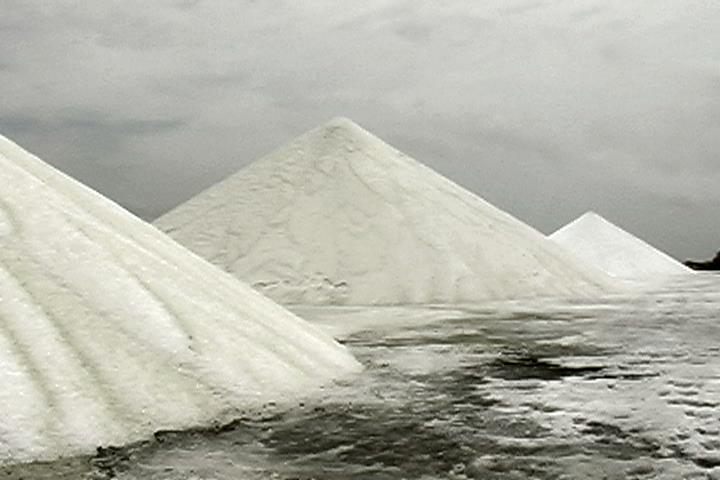 The Bounty Series, 2007 – Blue Pan in Bonaire (detail 1).
The Bounty Series, 2007 – Blue Pan in Bonaire (detail 1).
Conceptually effective in talking about land, landscape, territory and economics, The Bounty Series will be juxtaposed with the works of Charles Stankievech and Luis Camnitzer among others.
The Bounty series consist of a single photograph made on the island Bonaire. Jack explained to me that she traveled from St. Maarten to Bonaire for a literary festival. While driving with a group of invited international poets and writers from the airport to the hotel, Jack’s eye caught a vast area of salt a little away from the road.
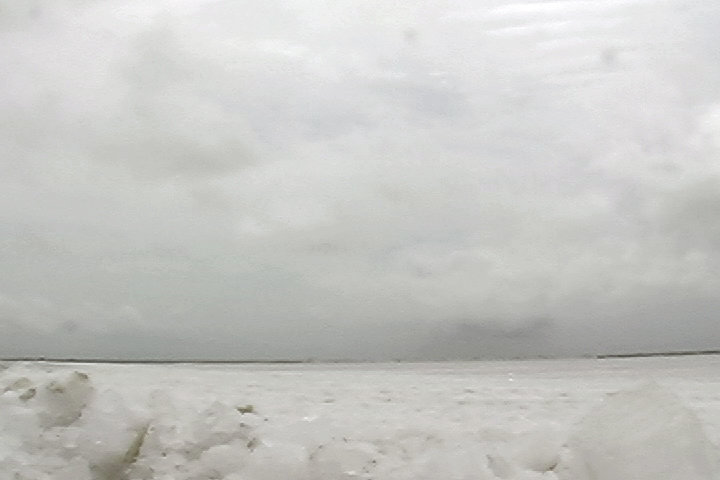 The Bounty Series, 2007 – Blue Pan in Bonaire (detail 2).
The Bounty Series, 2007 – Blue Pan in Bonaire (detail 2).
Jack was always on the hunt for the salt piles she had seen on historic photos and she initially had looked for on the island of Anguilla. The producer of the event, noticing Jack’s interest, offered to drive her back there. They were able to drive up to the office, however the secretary did not have the authority to give permission. She had to consult with the manager who was not on the premises at the time.
While the Dutch West Indian Company made Curacao the center of the Atlantic slave trade in 1662, Bonaire became a plantation to the company. African slaves were put to work alongside the native Awaraks, Caribs and convicts, harvesting solar salt at Blue Pan. The slave quarters, built entirely of stone and too short for a man to stand upright in, still stand along the saltpans as a grim reminder of the repressive past.
When they returned the company secretary mentioned seeing the poetry reading on television. As a result, the Cargill Salt Company (today’s owner) manager gave permission to go further onto the site and take video footage. She got a tour of Blue Pan and was allowed to take the pictures, which resulted in The Bounty Series.
The salt of Bonaire to this today is the most exquisite, fine and pure salt in the world and it’s extremely pricy. Walking behind the fences of the mines everybody has to wear soft cloth over their shoes to avoid soiling the salt or its environment. It was explained to Jack that the salt is so valuable that Cargill Salt uses it exclusively for watering softening purposes.
Jack is extremely conscious about the environment and the devastating effects it can have to an ecosystem. Only after the piece was exhibited in Infinite Islands at the Brooklyn Museum (2007) for a long period of time did she realize how many batteries the piece required.
She decided not to show it until another solution for lighting the piece could be found. This occurred in 2010 in a solo exhibition at the California Institute of Integral Studies in San Francisco: the piece was shown after the museum constructed a panel with electric LED lights.
3.
Nature, landscape of St. Maarten is the theme of the work of Jack. She connects it with the (slave) history of her country. The exhibition ‘Unsettled Landscapes’ could not fit better.
See Deborah Jack in 2014:
July 17, 2014 – January 11, 2015
SITElines 2014: Unsettled Landscapes – SITE Santa Fe
http://sitesantafe.org/exhibition/sitelines-unsettled-landscapes/
July 19, 2014
SITElines 2014: Unsettled Landscapes includes the panel: “Confronting Paradise: Land and Landscape in the Caribbean” at 11 a.m. in the Santa Fe Performing Arts Armory for the Arts Theater. Cozier, Curry, Leon and Jack will participate, along with Sara Hermann (Dominican Republic) and András Szántó (Davidoff Art Initiative).
https://sitesantafe.org/event/davidoff-art-dialogue/
November 8, 2014
Ars Vocalis Concert, Delft the Netherlands.
Deborah Jack lives and works in New Jersey. She received her M.F.A. from the State University of New York at Buffalo. She is an artist whose work is based in video/sound installation, photography, painting and text. Her work deals with trans-cultural existence, memory, re-memory and hurricanes. Awards and honors include a Lightwork Artist-in-Residence, Big Orbit Gallery Summer Artist in Residence, a CEPA Exhibition Award, New York Foundation for the Arts SOS grant, and The Photography Institute-National Graduate Seminar Fellow from The Prins Bernhard Fund of the Netherlands Antilles, and OKSNA. Jack is also a member of the art collective the Evolutionary Girls Club.
Her work has been exhibited in solo and group shows in the Caribbean, the United States, and Europe. Her work is part of the Lightwork collection, the Southwest Collection at Texas Tech University, the collection of the Island Government of St. Martin as several private collections.
She has published two poetry collections, The Rainy Season (1997) and skin (2006) and in the anthology Where I See the Sun: Contemporary Poetry in St. Martin (2013). Her poetry has appeared in The Caribbean Writer and Calabash and she has recited her work in the Caribbean, United States, South Africa and Europe.
Deborah Jack is an Assistant Professor of Art at New Jersey City University. http://www.deborahjack.com/
SITElines
SITElines: New Perspectives on Art of the Americas is a six-year commitment to a series of linked exhibitions with a focus on contemporary art and cultural production of the Americas. The exhibitions will take place in 2014, 2016, and 2018 and will be organized by a different team of curators, from locations throughout the Western Hemisphere. Through SITElines, SITE will establish a new programming hub called SITEcenter to generate connectivity between and during the exhibitions. SITElines will be a dynamic part of SITE Sante Fe’s Year-round museum exhibition and public programming.
Sasha Dees (Amsterdam/New York) is an international cultural producer and curator. Dees is currently producing the art films: Witte Dieren (Simone Bennett, Russia) and Lorca/Casement Project (David Antonio Cruz, Ireland). She is also guest curator for Centrum voor Beeldende Kunsten, advisor to the Mondrian Foundation for projects in USA and the Caribbean (NL), visiting curator for Residency Unlimited and Art Omi (NY), juror for Akrai Residency (Italy), editor -with Rob Perrée- of the planned publication I Wonder If They’ll Laugh When I’m Dead on Tirzo Martha (Curacao) and freelance contributor to ARC Magazine and Africanah. https://www.facebook.com/john106worldwide?ref=hl

